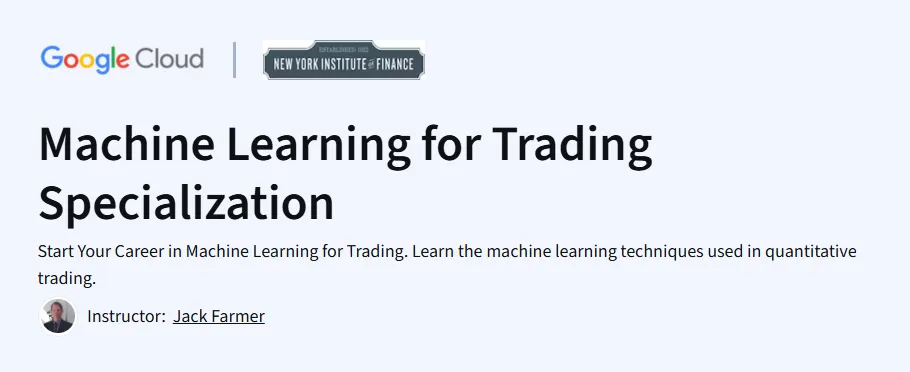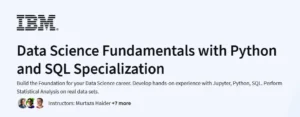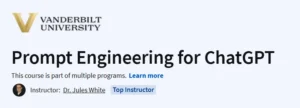What will you learn in Machine Learning for Trading Specialization Course
Apply ML techniques like supervised learning, time-series forecasting, and TensorFlow/Keras for quantitative trading.
Build scalable model pipelines using Google Cloud Platform for trading strategy development.
Create backtesting frameworks and deploy reinforcement learning (RL) agents for trading tasks.
Analyze financial patterns to craft momentum, statistical, and pairs trading strategies.
Program Overview
Module 1: Introduction to Trading, ML & GCP
⏳ 5 hours
Topics: Trading basics—trend, returns, stop‑loss, volatility—and quantitative strategy types (e.g. arbitrage).
Hands-on: Build basic ML models in Jupyter/GCP.
Module 2: Using ML in Trading and Finance
⏳ ~18 hours
Topics: Exploratory analysis, creating momentum/pairs trading models, using Keras/TensorFlow.
Hands-on: Backtest strategies; build ML models with Python.
Module 3: Reinforcement Learning for Trading Strategies
⏳ ~15 hours
Topics: RL concepts like policy/value functions; LSTM applications for time-series.
Hands-on: Design RL-based trading agents.
Get certificate
Job Outlook
Valuable for roles in quantitative trading, algorithmic development, and data-driven finance. Skills in ML, RL, and trading systems are highly sought after.
Intended for finance and ML professionals—intermediate Python, statistics, and financial knowledge required.
Specification: Machine Learning for Trading Specialization
|
FAQs
- Basic financial or trading knowledge is helpful but not mandatory.
- The course introduces trading concepts like momentum, pairs trading, and arbitrage.
- Focuses on ML, RL, and Python for strategy development.
- Beginners in trading may need extra time to understand domain-specific examples.
- Practical application is reinforced through backtesting and model-building labs.
- Labs cover building ML models using Python and GCP.
- Backtesting frameworks allow experimentation with real trading data.
- RL-based strategy sections are more theoretical with fewer coding exercises.
- Encourages independent implementation for real-world deployment.
- Focuses on skills transferable to quantitative trading roles.
- Prepares for roles like Quantitative Analyst, Algorithmic Trader, or ML Engineer.
- Builds skills for designing ML-driven trading strategies.
- Enhances employability in finance and fintech industries.
- Reinforces portfolio with practical backtesting and Python projects.
- Valuable for professionals seeking intermediate ML and finance integration.
- Introduces policy/value functions and LSTM applications for time-series.
- RL labs may be limited in coding exercises.
- Some RL concepts are more theoretical than hands-on.
- Learners are encouraged to build independent RL projects.
- Serves as a foundation for advanced RL-based trading implementation.
- Total estimated duration is ~38 hours across modules.
- Module 2 (ML in trading) is the most time-intensive (~18 hours).
- RL module takes ~15 hours with extra study needed for coding practice.
- Additional time may be needed for independent backtesting projects.
- Part-time learners can complete it in 6–8 weeks; focused learners in 3–4 weeks.





